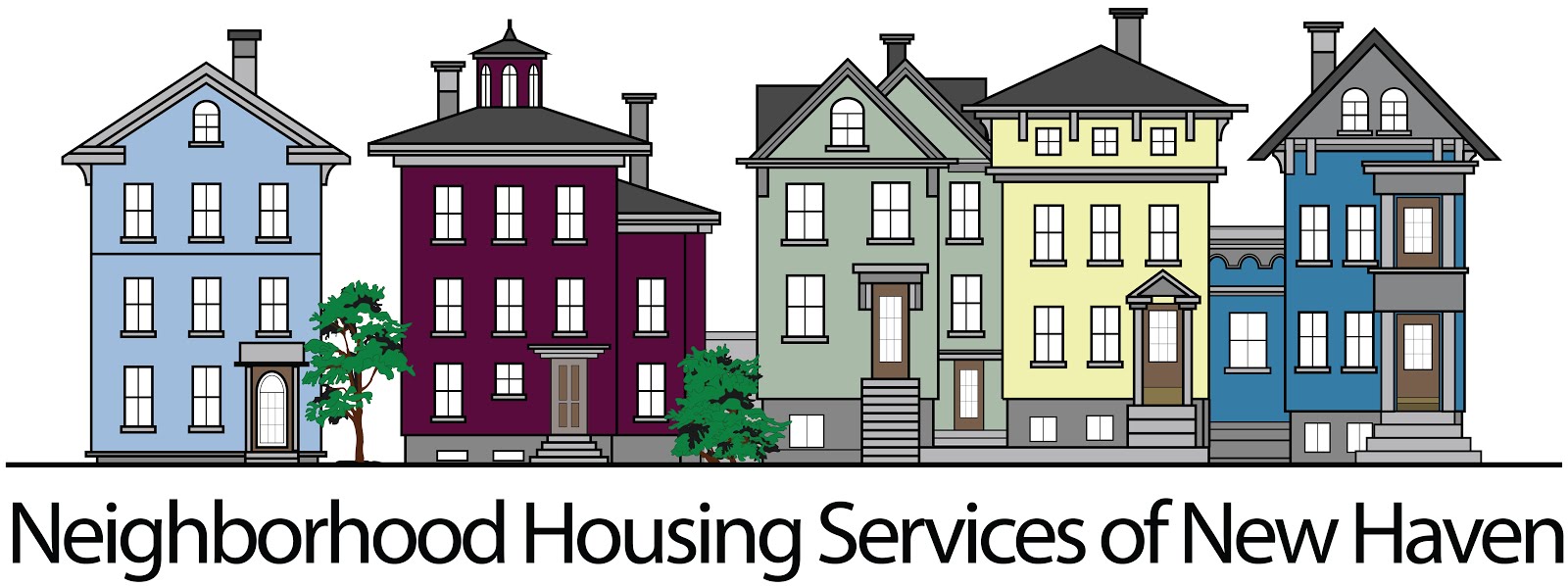Wells Fargo Volunteer Event April 16-17
For this Day of Caring project, we chose to have our volunteers help us out at the home of an older couple who have been working to refurbish their second-floor rental unit. With retired home owner, Mr. Garland on his road to recovery after sustaining serious injuries while working on the house, it has become clear that assistance would be needed to complete all the work that remains. That’s where the Wells Fargo volunteers stepped in!
 On Tuesday, 11 volunteers from the New Haven Wells Fargo region took to painting, scraping, sanding, and pulling up old vinyl tiles in the rental unit. Our group of lady painters was of the highest caliber, as not one smudge occurred in any of the three rooms requiring trim work and multiple coats of glossy paint. Several more hardworking guys took on the kitchen tile. Slowly but surely, they ripped up four layers of flooring to expose the original wood floors underneath. The team then pressed on to the stairwell, which hadn’t been painted in years and needed a fresh coat to pass inspection. Despite some precarious heights and balancing situations, the group was fearless under the leadership of Kim, the Vice President and District Manager of the New Haven Valley branch bank, leaving beautiful work in its wake.
On Tuesday, 11 volunteers from the New Haven Wells Fargo region took to painting, scraping, sanding, and pulling up old vinyl tiles in the rental unit. Our group of lady painters was of the highest caliber, as not one smudge occurred in any of the three rooms requiring trim work and multiple coats of glossy paint. Several more hardworking guys took on the kitchen tile. Slowly but surely, they ripped up four layers of flooring to expose the original wood floors underneath. The team then pressed on to the stairwell, which hadn’t been painted in years and needed a fresh coat to pass inspection. Despite some precarious heights and balancing situations, the group was fearless under the leadership of Kim, the Vice President and District Manager of the New Haven Valley branch bank, leaving beautiful work in its wake. The next day, a group of 7 Wells Fargo volunteers undertook finishing touches and outside work. Half of the group took to the yard to sand and seal the fence straddling the property line. It was in need of some extra care for upcoming seasons, and the volunteers saved the homeowner weeks of labor. Meanwhile, within the house, other volunteers finished up the trim work in certain areas of the house. One woman took a heat gun to over four layers of paint that the house had acquired in its hundred years of existence. Another brave soul finished repainting the ceiling of the stairwell and other small, out of reach details that the previous day’s team couldn’t get to. A lot of ladder-holding and teamwork was needed, but in the end, the team prevailed! At the end of the work day, three members of the team painted the stairs in the stairwell as the final bit of work. They literally painted their way out of the house!
The next day, a group of 7 Wells Fargo volunteers undertook finishing touches and outside work. Half of the group took to the yard to sand and seal the fence straddling the property line. It was in need of some extra care for upcoming seasons, and the volunteers saved the homeowner weeks of labor. Meanwhile, within the house, other volunteers finished up the trim work in certain areas of the house. One woman took a heat gun to over four layers of paint that the house had acquired in its hundred years of existence. Another brave soul finished repainting the ceiling of the stairwell and other small, out of reach details that the previous day’s team couldn’t get to. A lot of ladder-holding and teamwork was needed, but in the end, the team prevailed! At the end of the work day, three members of the team painted the stairs in the stairwell as the final bit of work. They literally painted their way out of the house!Wells Fargo, thank you so much for all of your hard work and expert hands! It’s always a joy having such capable people help out with challenging projects in our communities, and Wells Fargo really knew how to do things right. Cheers to a job well done!




















